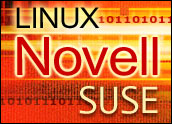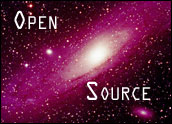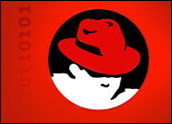
Novell has released a new version of Mono — an open-source implementation of Microsoft’s .Net framework — and some early adopters are already singing its praises.
“Mono makes Novell extremely relevant now,” said Kingsley Idehen, president and CEO of OpenLink, which has just released Virtuoso 3.5, a database-oriented middleware product that was built using Mono. As Idehen explained to LinuxInsider, “[Before], they didn’t control or have an influence on the key components of .Net technology. Now they’re managing a project that is producing a universal runtime environment that is shadowing Microsoft’s initiatives,” he said.
“As long as they make sure that Mono is tightly aligned with Microsoft’s technology, Mono gives them a level playing field,” said Idehen.
Controlling and Integrating Web Services
Of all the improvements in Mono Beta 2, Idehan says the ability to control and integrate Web services across platforms has been the most important to OpenLink. “Using Mono, we can take Web services developed for Windows and .Net, and pop them into Solaris and Linux,” said Idehen.
OpenLink has been a major user and supporter of the Mono project. “OpenLink Virtuoso 3.5 is a continuation of OpenLink Software’s support for the Mono project,” said Miguel de Icaza, CTO of Novell’s Ximian business unit and the project lead for Mono.
“As one of the first commercial applications to include Mono runtime integration, they have been able to contribute code and demonstrate the commercial viability to Mono,” he said. “As a result of Mono, Virtuoso is now able to deliver the kind of database engine and .Net CLR integration promised for SQL Server 2005/Yukon, without being platform specific.”
What’s Included?
Mono helps developers write rich-client Web services and server-side applications and deploy them on Linux, Solaris, Mac OS X, Windows NT/XP and various other Unix systems on a variety of architectures. It also contains tools to facilitate the creation of product APIs and SDKs that are language-independent across multiple operating systems.
The release includes a C# compiler, an implementation of the Common Language Infrastructure (CLI), and two stacks of application program interfaces (APIs) — one for Unix, Linux, Gnome and Mono, and one that is compatible with version 1.1 of Microsoft’s .Net framework and provides new support for ASP .Net, including Web services and forms.
Mono’s future
Still, Mono has a long way to go before it achieves the ubiquity of Microsoft’s .Net development tools. “Mono currently doesn’t have an impact on most of my clients,” said Thomas Murphy, vice president of research services for Meta Group. “Use of Linux in the enterprise is growing, but most people are using it for Java and if they are comfortable with .Net they generally are comfortable with Windows,” he told LinuxInsider.
Even so, Murphy is unwilling to write off Mono entirely. “As Linux grows to be more mainstream and Mono moves to production it could become a factor, as long as it is exactly the same and can keep up with other updates that MSFT will make to .Net as it moves towards WinFX and Longhorn.”
And while generally singing its praises, Idehen said that Mono still needs to incorporate one last major set of tools to deal with visual components and GUI-related programming tasks. “This release was a major step toward achieving the original vision,” he said. “Now we need the visual development tools and components. That’s the next big step.”





















































